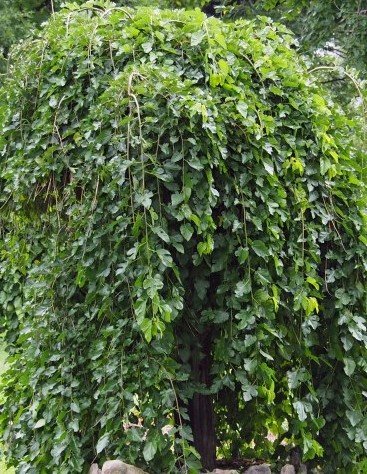Weeping Mulberry

Did you know?
Weeping Mulberry (Morus alba 'Pendula'), and other white mulberry cultivars, have been grown in China for nearly 5,000 years as a source of nutrition for silkworms. These small trees were originally imported to the United States in colonial times in an attempt to establish a silk industry in North America. The North American silk industry ultimately failed, but the white mulberry trees escaped cultivation and have since become weedy and invasive in many states.
Size
Up to 10 feet tall
Flowers, Fruit, Foliage
The small, sweet fruit attracts birds and can be white, pink, red, purple, or violet. Glossy green leaves are polymorphic and can be lobed or undivided. Gnarled stems weep downward to the ground.
Pests & Diseases
Bacterial blight, leaf spots, cankers, powdery mildew, scales, mites
Landscape Use
Excellent in distressed areas. Can also be used as a specimen.
Care Practices
Plant in moist, well-drained soil in an area with full sun to part shade. These plants are moderately cold hardy and tolerate heat, drought, air pollution, and a variety of soils.
Native Range
China





